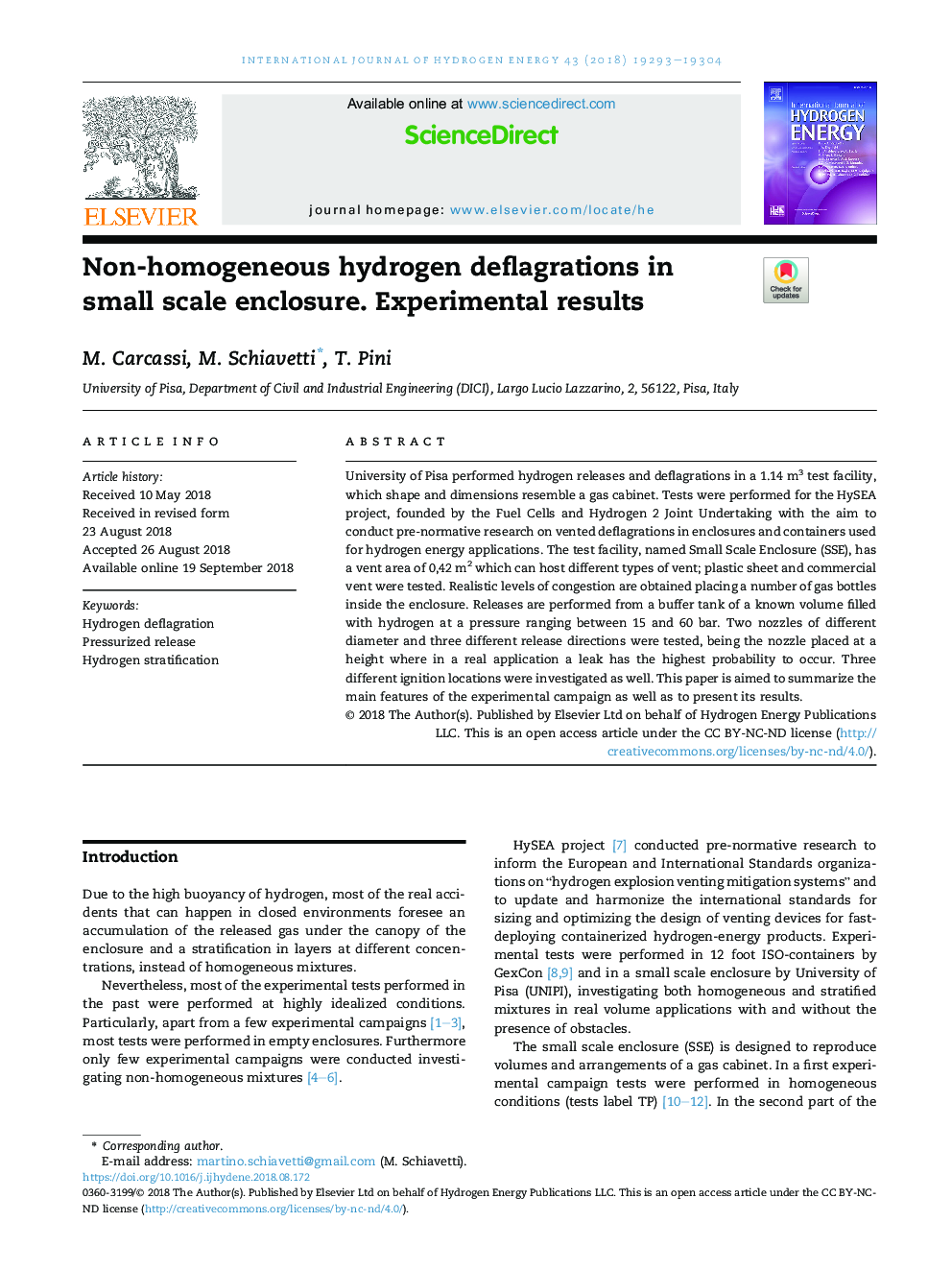| Article ID | Journal | Published Year | Pages | File Type |
|---|---|---|---|---|
| 11011679 | International Journal of Hydrogen Energy | 2018 | 12 Pages |
Abstract
University of Pisa performed hydrogen releases and deflagrations in a 1.14Â m3 test facility, which shape and dimensions resemble a gas cabinet. Tests were performed for the HySEA project, founded by the Fuel Cells and Hydrogen 2 Joint Undertaking with the aim to conduct pre-normative research on vented deflagrations in enclosures and containers used for hydrogen energy applications. The test facility, named Small Scale Enclosure (SSE), has a vent area of 0,42Â m2 which can host different types of vent; plastic sheet and commercial vent were tested. Realistic levels of congestion are obtained placing a number of gas bottles inside the enclosure. Releases are performed from a buffer tank of a known volume filled with hydrogen at a pressure ranging between 15 and 60Â bar. Two nozzles of different diameter and three different release directions were tested, being the nozzle placed at a height where in a real application a leak has the highest probability to occur. Three different ignition locations were investigated as well. This paper is aimed to summarize the main features of the experimental campaign as well as to present its results.
Keywords
Related Topics
Physical Sciences and Engineering
Chemistry
Electrochemistry
Authors
M. Carcassi, M. Schiavetti, T. Pini,
